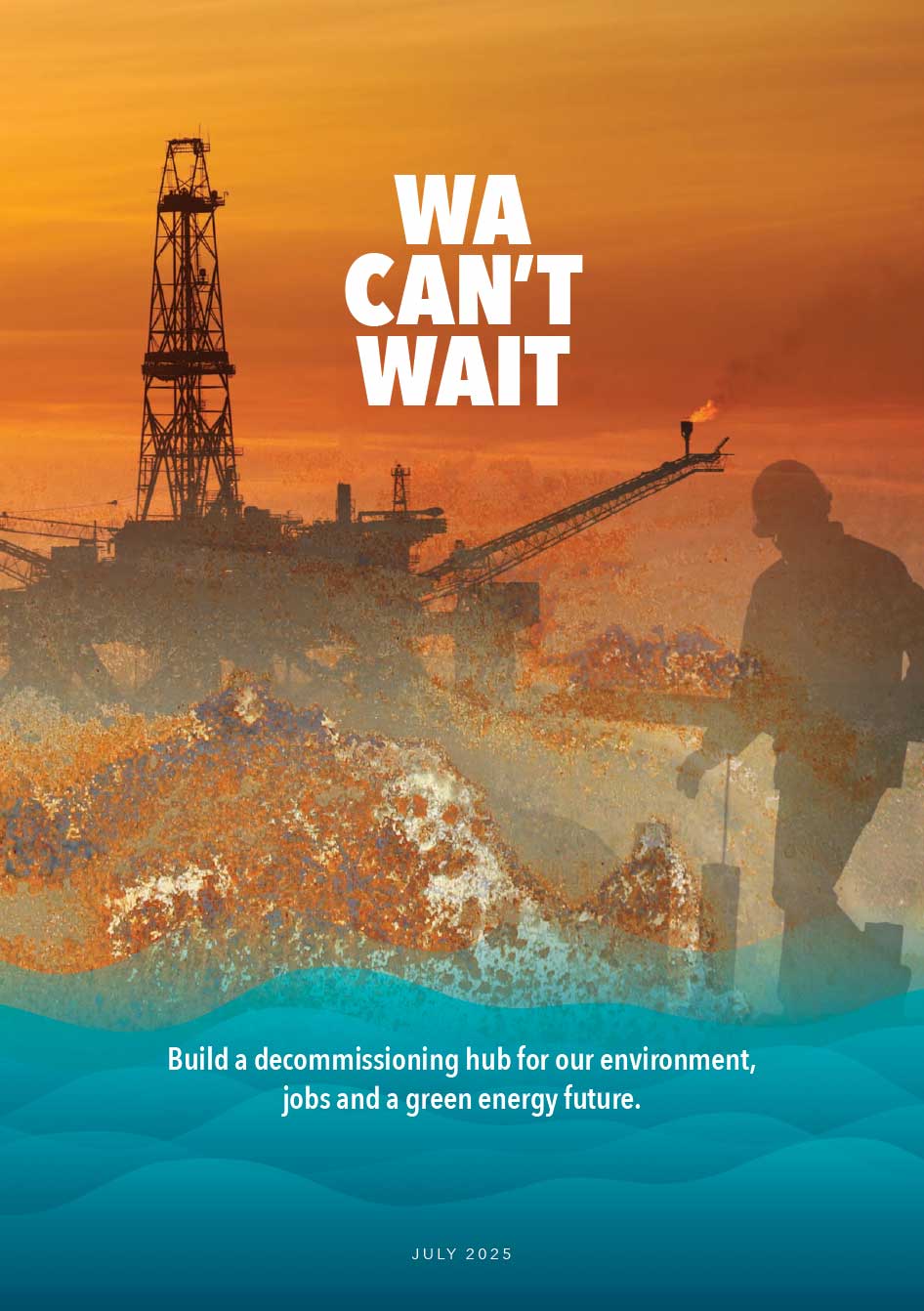
WA must lead the way by building a large-scale decommissioning hub for our environment, for jobs, and for a green energy future.
Australia stands at a crossroads, one that carries significant environmental risk and a once-in-ageneration opportunity for Western Australia’s economy, workforce and ecosystems. At the centre is the urgent and mammoth task of offshore oil and gas decommissioning.
According to the Centre of Decommissioning Australia (CODA), 5.7 million tonnes of material must be removed from offshore oil and gas infrastructure, equivalent to 110 Sydney Harbour Bridges. Of this, 89% lies off the coast of WA, making the state ground zero for what may be the largest industrial and environmental clean-up in Australian history.
This infrastructure includes:
- 1,008 wells
- 57 fixed seabed facilities
- 11 floating production, storage, and offloading vessels
- 4960 km of pipelines, 1,700 km of flowlines, and 1,500 km of static umbilicals
- 535 subsea structures and 120 risers
Most of it is made from high-value materials, 60% steel and 25% concrete, that can be recovered and recycled. Pipelines alone represent 67% of the total, much of it nearing end-of-life.
The risk
Without strong regulation and targeted investment, Australia faces two urgent risks:
- environmental damage, as ageing infrastructure corrodes and pollutes marine ecosystems; and lost economic opportunity, as other regions move fast to lead the global decommissioning market.
- While Australian law requires full decommissioning, enforcement is patchy. Some operators delay or avoid their responsibilities by proposing greenwashing solutions such as artificial reefs or abandoning infrastructure at sea. But this only heightens the danger of well leaks, pipeline ruptures, and the release of oil, heavy metals, plastics and radioactive materials into marine environments, including WA’s globally significant northwest coast. The financial risk is also real. As the Northern Endeavour case showed, when companies walk away, it’s the public that ends up paying the price.
The opportunity
Decommissioning is not just a clean-up, it’s an opportunity to build a strategic new industry. As offshore infrastructure nears retirement, WA can turn this growing liability into an economic asset and environmental legacy. Globally, the decommissioning market is projected to exceed USD $100 billion by 2030, and with decisive action, WA can become a regional leader, driving investment, creating thousands of secure jobs, and laying the foundations for a clean energy future.
With a large-scale decommissioning hub in WA, we can create thousands of secure jobs, support local supply chains, recover valuable materials for a circular economy and industries like green steel, and lay the groundwork for clean energy pathways to offshore wind and renewables.
The urgency
This is one of the most significant industrial and environmental tasks of our time, and also one of the most promising. The decommissioning timeline extends to 2060 and beyond, but the most urgent phase in Australia is now as 50% of infrastructure must be decommissioned before 2030, and nearly 75% by 2040. WA has the industrial capacity, geographic advantage, and skilled workforce to lead, but it needs clear policy, strong regulation, and strategic investment to get there. To seize this opportunity, the government must act decisively.
That means:
- Build a WA decommissioning hub
- Enforce existing laws to ensure full and timely decommissioning
- Invest in ports, recycling facilities, and a local workforce
- Hold operators financially responsible and mandate full industry-funded clean-up
- Introduce strict environmental monitoring
- Consult unions, First Nations, and communities to deliver a just, inclusive transition
- Link recycling to national green steel plans to position WA as a global clean energy leader.
Decommissioning is not optional, it’s essential. Australia urgently needs a large-scale decommissioning hub and WA is the best placed to lead it. With the right leadership, WA can transform an industrial challenge into a strategic asset and global model.
Australia can’t wait. WA must lead the way. Build a large-scale decommissioning hub for our environment, for jobs, and for a green energy future.
